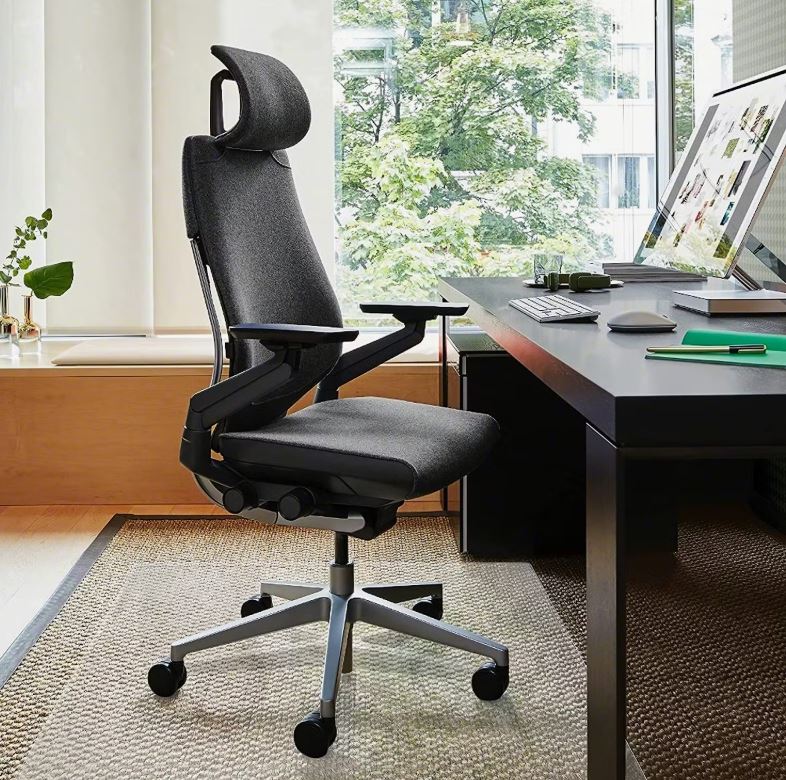An Office Chair is more than just a place to sit while working. It plays a significant role in maintaining comfort, promoting good posture, and boosting productivity throughout the day. Many employees spend over eight hours seated, which means choosing the right chair is a decision that impacts both health and work efficiency. A high-quality office chair supports the spine, reduces strain on the neck and shoulders, and allows freedom of movement. With the right features, you can avoid common issues like back pain, poor circulation, and fatigue. Whether you work from home or in a corporate setting, investing in the right office chair is an investment in your overall well-being.
Key Features to Look for in an Office Chair
When selecting an office chair, it is essential to focus on features that improve ergonomics and comfort. The seat height should be adjustable so you can keep your feet flat on the floor and knees at a 90-degree angle. Lumbar support is crucial, as it maintains the natural curve of the lower spine and prevents slouching. A breathable seat material like mesh improves airflow, keeping you cool during long hours of work. Armrests should be positioned to allow your shoulders to relax while supporting your forearms. Additionally, a swivel base and smooth-rolling casters make it easy to move around without straining your back. These details may seem minor, but together, they make a significant difference in daily comfort and health.
The Importance of Ergonomics in Office Chairs
Ergonomics is a critical factor in choosing an office chair that supports long-term health. An ergonomic design ensures that the chair fits the natural posture and movement of your body, reducing stress on muscles and joints. A well-designed office chair aligns your spine correctly, keeps your hips and knees at the proper angle, and reduces the risk of repetitive strain injuries. Many modern chairs come with adjustable backrests, headrests, and tilt mechanisms to customize your seating position. By focusing on ergonomics, you create a healthier workspace that supports your body instead of straining it. Over time, this leads to improved comfort, better focus, and fewer work-related injuries.
Office Chair Materials and Durability
The material of your office chair not only affects comfort but also determines its durability. Mesh chairs are popular for their breathability and lightweight design, making them suitable for warm climates and long working hours. Leather or faux leather chairs offer a more luxurious feel and are easy to clean, though they may retain heat. Fabric-upholstered chairs provide a softer seating experience but may require more maintenance to keep clean. The frame and base of the chair should be made from sturdy materials like steel or reinforced plastic to ensure longevity. When investing in a chair, it is wise to choose one that can withstand daily use while maintaining its comfort and support.
How the Right Office Chair Improves Work Performance
An office chair directly impacts your work performance by influencing your posture, energy levels, and focus. Sitting in a poorly designed chair can cause discomfort, leading to frequent breaks and reduced concentration. In contrast, a comfortable and supportive chair keeps your body aligned, allowing you to work for longer periods without strain. Reduced physical discomfort means you can dedicate more mental energy to tasks, resulting in higher productivity. Furthermore, employees who are provided with ergonomic chairs often experience fewer sick days due to musculoskeletal issues, which benefits both the worker and the organization. The right office chair is not just about comfort—it is a productivity tool.
Office Chair Styles for Different Workspaces
Different work environments require different types of office chairs. For traditional corporate offices, executive chairs with high backs and premium upholstery offer a professional appearance and enhanced comfort. In creative or collaborative spaces, task chairs with flexible adjustments and mobility are ideal for active working styles. For home offices, compact chairs with ergonomic features work well in smaller spaces without compromising comfort. Specialized chairs, such as drafting chairs, are perfect for professions that require elevated seating, like architects or designers. Understanding your workspace needs will help you choose the style that blends comfort, functionality, and aesthetics.
Maintaining and Caring for Your Office Chair
To keep your office chair in excellent condition, regular maintenance is necessary. For fabric chairs, vacuuming or brushing away dust helps maintain cleanliness, while mesh chairs can be wiped down with a damp cloth. Leather chairs should be treated with a leather conditioner to prevent cracking and wear. Check the wheels and base regularly for signs of damage and replace any worn-out parts to maintain stability. Tighten loose screws and ensure the chair’s adjustment mechanisms function smoothly. With proper care, your office chair can last for many years, continuing to provide the support and comfort you need for productive workdays.
Why Investing in a Quality Office Chair Is Worth It
While it may be tempting to choose a cheaper office chair to save money, the long-term benefits of investing in a quality chair far outweigh the initial cost. High-quality chairs offer better ergonomics, durability, and adjustability, which contribute to improved health and work performance. Considering the hours spent sitting each week, the cost per use of a good chair becomes minimal compared to its benefits. By prioritizing comfort and support, you are making an investment in your productivity, health, and overall workplace satisfaction. Whether for personal or professional use, a quality office chair is one of the most valuable additions to any workspace.

